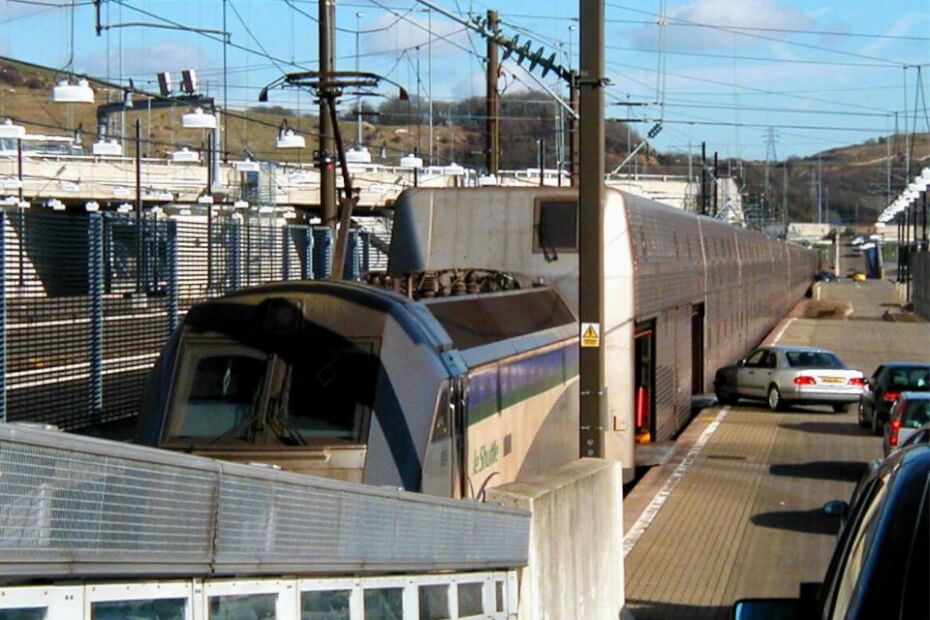
Travelers using the Channel Tunnel will not experience long queues when the European Union’s (EU’s) new Entry/Exit System (EES) is introduced.
This is what the chief executive of Getlink, Yann Leriche, guaranteed during the 30-year celebration of the opening of the Channel Tunnel on 7 May.
Getlink (formerly Eurotunnel) operates the Channel Tunnel, an undersea railway tunnel connecting Folkestone in Kent, United Kingdom (UK), and Calais in Coquelles, France.
“There will be no delay on the highway, nothing. It will happen in a very smooth manner,” Leriche told the BBC.
He explained that travelers “will simply [get] out of their car, spend a few minutes on their kiosks, and go back to their car and continue their journey.”
Leriche said with the EES rollout, crossing the Channel Tunnel would take “five to seven minutes extra” compared to the current travel time.
The company has increased the number of lanes to address this issue and ensure no delays or long queues.
Getlink also plans to hire and train 140 additional staff members to assist passengers during the EES rollout.
According to Actual News Magazine, Leriche said the EES rollout “does not worry us at all.”
“On the contrary, we see it as a complementary advantage by doing better than other operators,” he said.
Long queues and delays during the EES rollout expected
The EES will affect both short-stay visa holders and visa-exempt travelers such as British citizens.
It will require non-EU travelers to register biometric data before a border officer the first time they visit the Schengen Area.
During subsequent visits, they must record their entry and exit using facial or fingerprint scans instead of passport stamping.
The EES rollout prompted warnings of long queues and delays at the UK-EU borders, especially those with juxtaposed controls.
This includes border crossing at the Channel Tunnel, the Port of Dover, and London’s St. Pancras Station.
At borders with juxtaposed controls, EU border officers perform immigration checks while the travelers are still in the UK.
At the Port of Dover, officials warned of 14-hour-long delays. Passengers would need to get out of their vehicles to register for the EES.
Local authorities have also expressed concern that it would turn their roads into a parking lot and affect the quality of life and the economy.
High Speed 1 (HS1) had suggested that Eurostar would be forced to limit passenger numbers to avoid snaking lines at the St. Pancras station.
Getlink’s infrastructure, technology to minimize disruption
Getlink has invested €80 million to prepare its Coquelles and Folkestone terminals for the EES rollout.
It has recently completed the construction of a roof-covered drive-through “pre-registration area” at its Coquelles terminal.
The 7,000 square meter infrastructure allows passengers to submit passports and register facial and fingerprint scans.
Each drive-through bay will have two EES kiosks to complete the necessary biometric checks.
The Channel Tunnel operator says it can simultaneously accommodate up to 60 passenger vehicles.
The company had already installed the first EES kiosks. The rest of the kiosks will be installed by May 2024.
At Getlink’s Folkestone terminal, adapting it for the EES rollout will continue until the summer.
The EES kiosks on the UK side will be installed starting in July 2024.
Apart from drive-through bays, Getlink also built a facility for authorities to view the pre-registration zone and parking bays.
The panoramic view and CCTVs will help facilitate border checks conducted by the EU border officials.
Leriche’s confidence in ensuring no long queues or delays at Getlink’s terminals is also due, in part, to artificial intelligence.
The company used artificial intelligence to conduct detailed traffic flow analyses under the new systems.
“Thanks to digital, thanks to the daily work of our teams, thanks to the work with the French and British authorities, we have prepared all of that,” Leriche shared.
Several calls to delay the EES rollout
The EES is set to launch on 6 October 2024, but the L’Union des Aéroports Français (UAF) revealed that it had been pushed back a month later.
Due to technological concerns, the EU postponed the EES rollout from its initial 2021 date to September 2023.
It was rescheduled to October 2024 to avoid travel disruptions during the Olympic games set in France from July to September.
However, several transport and travel officials have urged the EU to delay the EES rollout, at least until the EES app is ready.
The EU is developing an app to help travelers register for the EES ahead of time and away from the border.
The UK Home Office’s Tom Pursglove confirmed to the European Scrutiny Committee what Eurostar boss Gwendoline Cazenave had disclosed earlier.
The EES app will not be ready in time for the EES launch later in the year. Instead, it will be made available as soon as possible.
Still, the EU is firm in its October EES rollout date as the new border check system will work independently without it.
Additionally, EU member countries will not be required to use it.
Transport Minister Guy Opperman also revealed that the EES rollout will have a six-month soft-launch period to ensure smoother transitions and prevent delays.

